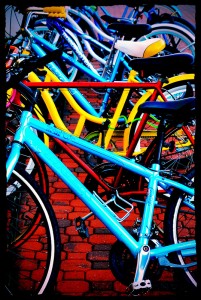InTrans / Dec 20, 2013
Driving trend: A downward spiral?
Go! Magazine

posted on December 20, 2013
In 2008 only half of all potential millennial drivers (those born between the late 1980’s and mid-1990’s) had licenses, according to a report from the AAA. They also drove (vehicle miles traveled), on an average, 20 percent less than their parents did when they were the same age. Car sales to millennials have also decreased dramatically. More and more, millennials are moving to cities and putting off purchasing items that were considered rites of passage by their parents and grandparents. They are waiting longer to get married, buy homes, and are putting off, or outright not purchasing, cars. Instead, they prefer to take public transit, bike and/or walk places.

What is the reason for this change?
There are a variety of explanations for the change in trend. The most commonly cited reason is the economic downturn. With cars (and everything associated with cars, such as gas and insurance) being expensive and with young people being unemployed, or working in jobs for which they’re overqualified and hence underpaid, it’s difficult for millennials to afford cars.
The second reason is a change in millennial’s perception of cars; they do not believe that cars are a “must-have” or a necessity. Millennials are also more likely to live in cities where public transit is more widely available, which means cars are increasingly seen as a hassle rather than a convenience. In addition, Smartphones make it easier to navigate the various public transportation options.
Another reason could be millennial’s concern for their environment. They prefer choosing “greener” modes of transportation, like bikes to save their environment from the polluting effects of cars. There has also been a shift in millennials spending money on “experiences,” such as movies or going places, rather than on material things, such as cars.
Trying to win them back
Car companies have, in an effort to reach out to millennials, started developing and offering cars with more technology built into them such as Bluetooth, Smartphone syncing, self-parking, rear sensors, and various other technologies. Car designs and colors have changed to appeal to millennials more. So far it doesn’t seem to have had much impact. Car purchases have not increased notably. It is not known what driving trends will be in the future. It was long assumed that millennials would drive even more than their parents, but this assumption has, for now, proven false. It’s possible that, as millennials have children, they will move to the suburbs and buy cars and the trend would reverse. But, it’s also equally possible that they may stay in the cities and the number of people driving will further decrease.
The future
Regardless, this change in trend is a unique opportunity for millennials to determine the future of transportation in America. They can change our dependency on fossil fuels and push for increased availability of public transit. A decrease in the use of cars will drastically lower US’s carbon emissions and our role in climate change. The chance to change the future of transportation is both unique and rare. It is not often that an entire generation has a chance to change a nation’s infrastructure and the lifestyle of its citizens. It’s a chance that we shouldn’t squander.
By Rema Nikalanta